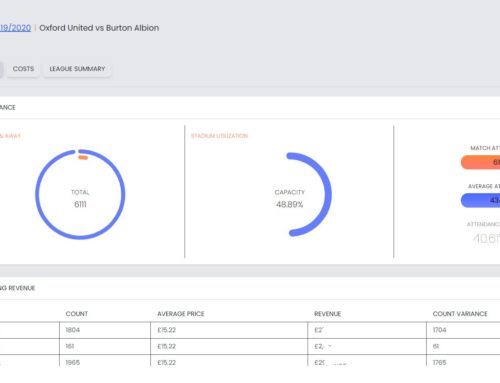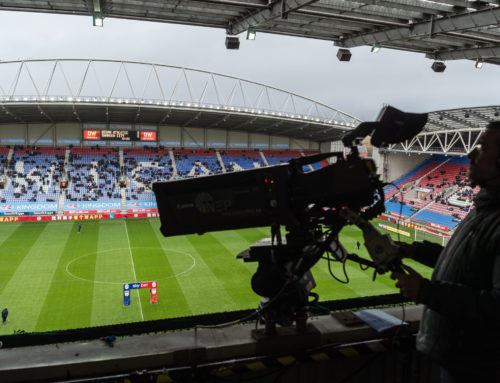BLOG | By Chief Executive Matt Everett
There unfortunately seems to be a sting in the tail of the Covid-19 pandemic, particularly in the UK currently. You need to look no further than the daily news headlines about using the data hour-by-hour to make informed decisions, to see how real-time data is key to informing policy in a very high profile way.
Couple that with the announcement that Wales will enforce all sporting fixtures to be played behind closed doors once more for at least the next few weeks, and it in clear that, here at least, fans will be taking stock and making individual choices whether to attend matches based on their circumstances, just when sport and confidence amongst the public seemed to be recovering.
So what has this got to do with ClubView?
Well, it perfectly highlights the power of real-time benchmarks and insights to clubs. We have been working with 9 EFL pilot clubs, looking at their matchday revenues and costs back to the 2014/15 season, and crucially on the impact the pandemic has had.
By aggregating their data, we’ve been able to show the impact as the season has progressed on matchday revenues and costs. Across the 9 clubs, the average attendance drop was 12.9% since 2019/20, the last (almost!) full season with supporters in attendance.
The advantage that these clubs have, is that every week the benchmarks and trends are updated – they can identify in real-time whether any changes were just local to them as a club, regional, or across the entire group of clubs.
This is why ClubView partners with leagues. Every club will know very well their own performance, but it is possible to gain huge benefit from understanding how that compares to others, without sharing commercially sensitive data.
In real life terms, how might this make a difference? Well, just last week, it was suggested that fans should only attend a stadium this weekend if it to get a vaccination, not to watch a match.
So what was the impact on fan confidence? Clubs need to know immediately what impact this type of public health advice will have on their revenues, so that they might adjust their forecasts accordingly. The only way to understand the true impact is to know how this affected everybody, remove outliers and factors such as form, and use long-term data to give informed benchmarks based on the current time.
But there is a wider picture, and more insight that would be crucial for clubs planning over the coming weeks. Those with attendances over 10,000, have to implement additional measures to check Covid vaccination status as a legal requirement for entry. Understanding what the cost implication was for the resource required for such an operation, across many clubs, may help those who play at home the following week to make informed decisions on staffing. It may even lead to clubs whose attendance was around the threshold to decide to cap their capacity with the knowledge that the increased costs of undertaking such an operation would not be covered by additional ticket sales and concourse revenue.
Similarly, the low turnout of season ticket holders – those who have paid for their ticket and are counted in the attendance but do not show up. This number will have undoubtedly increased over recent weeks, as uncertainty grew. Again, by knowing how your actual football compares to others, will help you to forecast costs and revenues on in stadia concourses for example. You can then take action by establishing if you as a club are doing enough to give confidence to attend, or whether you need to focus on this more.
All of these are examples where a real-time platform like ClubView would be able to show these insights and benchmarks to clubs as events like this were occurring, and allow them to take actionable decisions.
The ever changing pandemic situation means constant adjustments to financial planning for sports clubs, and as the uncertainty looks set to continue for some time, using club data to enhance decision making capability in the ClubView platform would result in at least some of the uncertainty being reduced.





